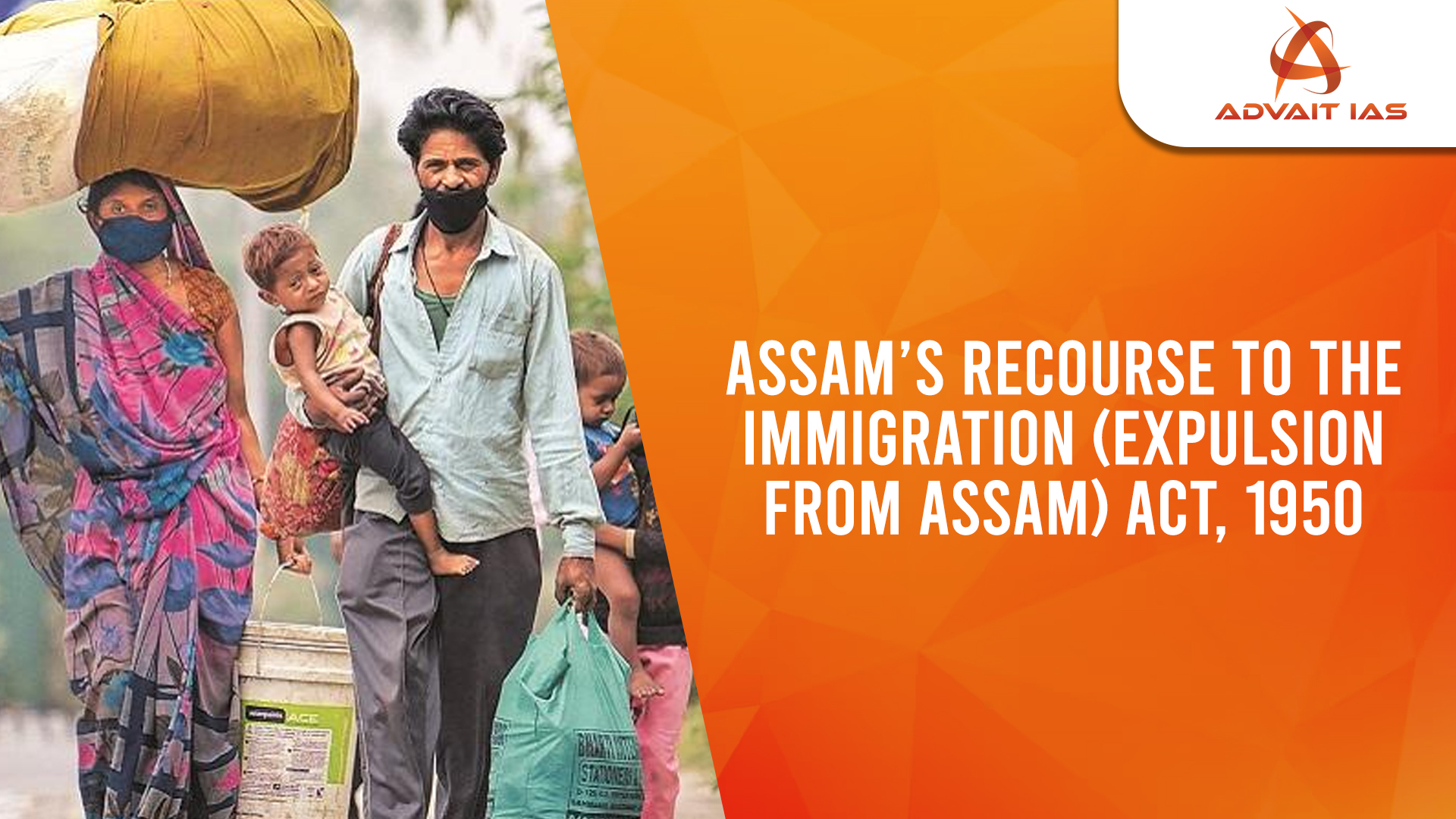The Assam government has revived the use of the Immigration (Expulsion from Assam) Act, 1950 (IEAA) to address the issue of illegal immigration, particularly from Bangladesh. This move follows Supreme Court (SC) endorsements and the failure of earlier legal mechanisms like the IMDT Act, 1983.
Significance of the IEAA, 1950:
- Enacted to address mass migration from East Pakistan (now Bangladesh) post-Partition.
- Aimed to curb disruptions to Assam’s demographic balance, economy, and law & order.
- Declared constitutionally valid by the SC in the Sarbananda Sonowal (2005) case.
- Recently upheld again by the SC in October 2024 verdict, read into Section 6A of the Citizenship Act, 1955.
IEAA and Section 6A of the Citizenship Act, 1955:
- Section 6A was inserted after the Assam Accord (1985) to regularize migrants up to 24 March 1971.
- SC has held IEAA to be operational alongside Section 6A for detecting and deporting illegal immigrants.
- The October 2024 judgement ensures the IEAA is implemented effectively, along with other laws.
Why the Return to IEAA Now?
- IMDT Act (1983) made detection/deportation difficult; it was struck down in 2005.
- After the SC judgment, older laws like the Passport (Entry into India) Act, 1920, and Foreigners Act, 1946 regained full applicability.
- The IEAA offers a streamlined, Assam-specific tool in the absence of a nationwide mechanism.
Role of Other Legal Instruments:
- Passport (Entry into India) Act, 1920 mandates possession of valid passport and allows police/customs officers to arrest without warrant.
- Foreigners Act, 1946 and Passport Act, 1967 empower the state in detection, detention, and deportation of foreigners.
Supreme Court’s 2024 Verdict on Section 6A:
- Reiterated time-bound implementation of IEAA, Foreigners Act, Passport Acts, etc.
- Directed creation of a Bench for continuous monitoring of these laws’ implementation.
- Warned against discretionary enforcement by authorities.
IEAA vs. NRC (National Register of Citizens):
- NRC prepared under Citizenship Rules, 2003, specific to Assam under Rule 4A.
- NRC not yet gazetted as final; thus, scope for reverification remains.
- Rule 10 & 11 permit deletion/updating of names if found based on false information.
- Names in NRC do not grant immunity if documents or credentials are false.
IEAA and the CAA, 2019
- CAA provides protection to non-Muslim migrants from Bangladesh, Pakistan, Afghanistan till 31 Dec 2014.
- Proviso to Section 2 of CAA covers those fleeing civil disturbances in East Pakistan (now Bangladesh), including those in Assam.
- IEAA still applies to non-exempted individuals, especially those outside CAA’s protective scope.
The IEAA, 1950 remains a legally valid and strategically necessary instrument for Assam in addressing illegal immigration. However, its success lies in comprehensive enforcement, judicial oversight, and coordination with other citizenship and immigration laws, while safeguarding constitutional morality and human rights.






